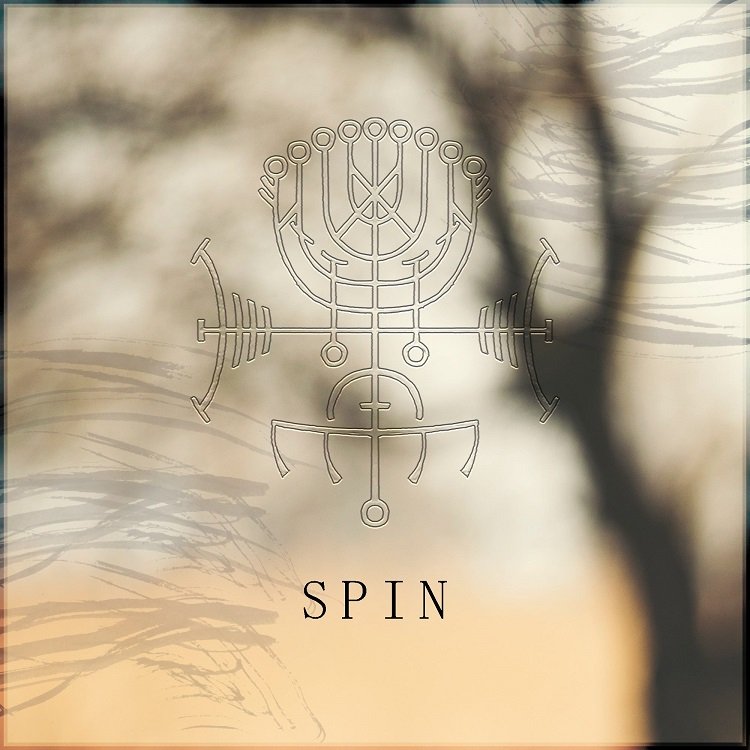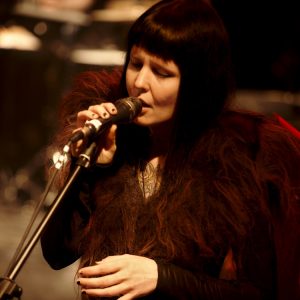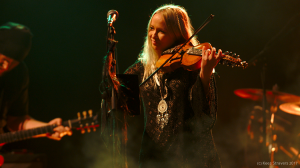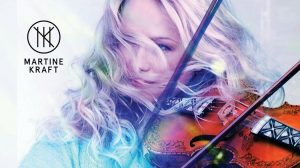
Six years ago on December the 21th 2011, the day of the winter solstice, EMIAN was formed. To celebrate that moment, we have decided to write an introduction for their latest album Khymeia. Way overdue of course, but better late then never.
From the moment I put Khymeia, the second album from the Italian Pagan Folk band EMIAN, in my CD-player, it started to grab me. At first it surprised me, then their music started pulling me in… note by note. By the time the 5th song La Cama Nupcial was playing there was no turning back. I was hooked! The musicality, the originality, the talent. This is a CD well worth buying… But now I’m getting wàààày ahead of myself, so first things first.
EMIAN is a 4 person Pagan Folk band from Italy. As it was formed at the winter solstice 2011, it’s no big surprise the band get its inspiration from their own southern Italy Pagan roots, Mother earth, nature and ancient cultures. They do so with songs by their own hand, inspired by Celtic, North-European and Mediterranean folklore, and songs they collected from those periods, be it in Italian, Finnish, French, English or Gaelic (Both Scottish and Irish Gaelic), taking influences from shamanistic chants to medieval ballads.
The band members are:
– Aianna Egan (Anna Cefalo) on vocals, celtic harp and castanets (those are fun).
– Emian Druma (Emilio Antonio Cozza) on vocals, hurdy gurdy, nyckelharpa, fiddle, flute, percussion, medieval bagpipe and the Persian santur, an instrument that looks a lot like a hammered dulcimer.
– Rohan (Danilo Lupi) on acoustic bass, Irish bouzouki, the tin and low whistle and backing vocals.
– Mártín Killian (Martino D’Amico) on drums, percussion, guitar and backing vocals.

The intro song Tribus Hirpeis is followed by a vocal piece written by themselves. Hyria starts with an enchanting harp melody supported by the Persian santur, giving the song a Greek feel. Anna quickly joins in. She has a beautiful warm yet strong voice. A pleasure to listen too. After this ballad-esque start the acoustic bass joins in, giving the song a surprising modern feel. This in contrast to the use of the tribal bass sound from the didgeridoo, well-known from other Pagan Folk bands. Surprising at first, but it actually fits perfectly. With the violin joining in with the harp melody, the band captivates you. Without warning you drift into Khymeia‘s musical world. One you will enjoy.
La giga del lupo starts with a Celtic harp jig that takes me back to the Pagan folklore days of OMNIA, but a loud ‘yehaa’ brings in Emilio’s violin. Playing a lovely Irish folk melody and making it into a perfect instrumental Balfolk dance song. Short, but therefore more powerful.
 Rebys is a strong, cheerful and up-tempo song with Spanish Sephardic lyrics, driven by the rhythm of the drums. The Italian language just works wonders in this style of music. Again Anna Cefalo shows she is a really good singer, but she is not alone. It becomes clear that all the band members are talented musicians. A lot of things are happening in the music: harp, Irish bouzouki, hurdy gurdy, percussion, castanets, but also musical breaks, sudden twists in the rhythm, it’s all there. This is really a CD you want to listen to with headphones, just to be able to hear everything that’s hidden in the music (or play it very loud in the living room… when the neighbours are not at home). Midway through this song there is a sudden break in the music, taking it back to only Anna Cefalo’s voice and harp, before the band kicks in again. This build-up is repeated at the end of Rebys.
Rebys is a strong, cheerful and up-tempo song with Spanish Sephardic lyrics, driven by the rhythm of the drums. The Italian language just works wonders in this style of music. Again Anna Cefalo shows she is a really good singer, but she is not alone. It becomes clear that all the band members are talented musicians. A lot of things are happening in the music: harp, Irish bouzouki, hurdy gurdy, percussion, castanets, but also musical breaks, sudden twists in the rhythm, it’s all there. This is really a CD you want to listen to with headphones, just to be able to hear everything that’s hidden in the music (or play it very loud in the living room… when the neighbours are not at home). Midway through this song there is a sudden break in the music, taking it back to only Anna Cefalo’s voice and harp, before the band kicks in again. This build-up is repeated at the end of Rebys.
The next song La Cama Nupcial starts off as if it’s another break, with only Anna’s harp again. If you wouldn’t look at your display at that point, you would certainly think you were still listening to Rebys. Brilliantly done. It clearly shows EMIAN’s compositional skills.
La Cama Nupcial itself is a beautiful duet between harp and flute, a bit like the instrumental duets Sowulo are known for. I always make notes while listening to an album for a review, and at this point I wrote: “I’m now officially hooked!”.
Khymeia is a beautiful album that fits well in the realm of OMNIA, Faun, Sowulo and Rastaban. Not that EMIAN is a copy of any of those bands. They have their own unique style. It’s just to give you, the listener, an idea of what to expect.
 The first song not written by EMIAN themselves, and the 6th on the album, is El Viaja de Maria. To show how diversely skilled the members of EMIAN are, it starts with a bit of overtone singing by Emilio Cozza. This is a singing technique where you sing a low tone while making an ‘oe-oo-eu’ sound. When a singer is skilled and has had a lot of practise, his or her vocal chords can make a second tone, higher then the first. The song itself is a well-known traditional
(In Extremo
recorded a nice version), but EMIAN re-arranged it so it fits their style perfectly. The long instrumental intro will draw you into the song.
The first song not written by EMIAN themselves, and the 6th on the album, is El Viaja de Maria. To show how diversely skilled the members of EMIAN are, it starts with a bit of overtone singing by Emilio Cozza. This is a singing technique where you sing a low tone while making an ‘oe-oo-eu’ sound. When a singer is skilled and has had a lot of practise, his or her vocal chords can make a second tone, higher then the first. The song itself is a well-known traditional
(In Extremo
recorded a nice version), but EMIAN re-arranged it so it fits their style perfectly. The long instrumental intro will draw you into the song.
Níl Sé’N Lá is actually a Scottish Gaelic song but in the arrangement of EMIAN it becomes a Greek traditional, driven by the percussion. Weird in a way, but it works. It works really well actually. It’s something that EMIAN does so well: they blend their influences together, not only in their song choice alone but also within the songs themselves, making them way more interesting.
I’ll stop here because I don’t want to give away every song on this album. It’s much more fun to get Khymeia yourself and start discovering EMIAN’s musical world . Just listen to the instrumental song La Gavotte for instance. A fun French Balfolk song that, again, finds itself somewhere between the music of Omnia and Faun. Chêne blanc is another up tempo, instrumental dance song. My personal favourite. Kuulin Äänenn is a Finnish (!) ballad, beautifully sung by Anna and Martino D’Amico, but then, halfway, turned into a cheerful Balfolk song. Listen to that flute solo in the end! Surely this song is the high-light of every concert they play. My last personal tip is Le Due Sorelle, an Italian translation by Anna Cefalo of the famous song The Twa Sisters. I have to say the Italian language is very suitable for a ballad like this.
With Khymeia, EMIAN has put themselves right in the top of the pagan folk scene. In my eyes a must have album for everyone who loves this particular style of music.
– Cliff
– Concert photos taken at Castlefest 2017, courtesy of:
Mariëlle Groot Obbink








